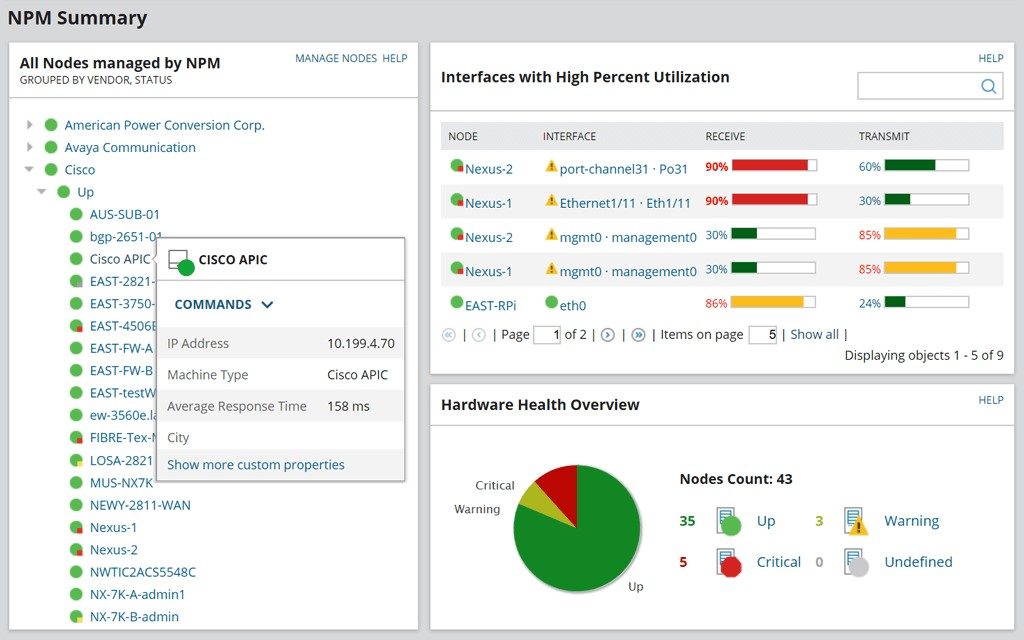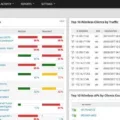When it comes to analyzing the performance of networks and systems, two terms are often used interchangeably: bandwidth and throughput. Although both terms are related to measuring the rate of data transmission, they each represent different aspects of data transfer.
Bandwidth is the maximum amount of data that can be transferred in a given period. This number is usually expressed in bits per second (bps) or megabits per second (Mbps). The higher the bandwidth, the more data can be transmitted at once.
Throughput, on the other hand, is a measure of the actual data transmission rate. It takes into account not only successful transfers but also those that failed or were retransmitted due to errors. As such, throughput represents what is actually being transferred at any given time, rather than just what could potentially be transferred if everything went perfectly.
When it comes to measuring network performance, throughput is more important than bandwidth as it provides an accurate representation of how much data is actually being transmitted from point A to point B. Throughput is expressed in bits per second (bps), including megabits per second (Mbps) or gigabits per second (Gbps). Higher throughput means that more data can be processed at a time which results in improved system performance.
To sum up, although both bandwidth and throughput are necessary for understanding network performance, throughput provides a more accurate picture of how much data is actually being transferred over a period of time. Throughput should always be taken into consideration when measuring the efficiency of a system or network as it will provide an indication of whether or not all transmitted packets have been successfully received at their destination.

Does Increased Bandwidth Result in Increased Throughput?
No, higher bandwidth does not necessarily equate to higher throughput. Bandwidth is a measure of the theoretical maximum amount of data that can be transferred across a network, while throughput is the actual amount of data that is successfully transmitted. While it is true that increasing bandwidth can improve throughput, other factors such as network congestion and packet loss can limit the actual performance of the network and result in a lower-than-expected throughput. Therefore, it is important to consider both bandwidth and other factors when assessing network performance.
The Difference Between Bandwidth Throughput and Goodput
Bandwidth throughput is the total amount of data that can be transferred through a network connection at any given moment, while goodput is the actual amount of useful data that is successfully sent through that connection. In other words, goodput takes into account the fact that some data may be lost or corrupted due to noise or retransmissions and only measures the amount of data that is actually received. Bandwidth throughput does not take this into account; it measures all of the data being sent, regardless of whether it was received or not. Therefore, goodput is typically lower than bandwidth throughput.
The Benefits of Increased Throughput
Yes, having a higher throughput is better in general because it means the system is capable of processing more data at a time, which can increase performance. Higher throughput can allow for faster loading times and smoother transitions between tasks. It can also enable more users to connect to the system without experiencing a noticeable decrease in speed or performance. Ultimately, having higher throughput makes it easier to get more out of the system, making it beneficial overall.
The Difference Between Bandwidth and Throughput with an Example
Bandwidth and throughput are two related but distinct terms that refer to the speed of data transfer. Bandwidth is the maximum amount of data that can be transferred over a connection in a given amount of time, while throughput is the actual amount of data that gets transferred in a given amount of time.
For example, if you have an internet connection with a bandwidth of 100 Mbps (megabits per second), it means that it has the potential to transfer up to 100 megabits of data per second. But due to various factors such as network congestion, your actual throughput may be much lower. If your internet connection’s actual throughput is 50 Mbps, then it means that only 50 megabits of data are actually being transferred every second.
Types of Bandwidth
The three main types of bandwidth are public wireless, public broadband, and private networks. Public wireless networks use cellular services such as Long Term Evolution (LTE) or 4G, and satellite networks to provide high-speed internet access. Public broadband is typically available through cable or DSL providers and is usually the most cost-effective way to access the internet. Private networks are available through companies that provide dedicated connections for their customers. Finally, Software-Defined Wide Area Networks (SD-WANs) provide a secure connection with virtual private networking capabilities, allowing businesses to manage their data more efficiently.
Measuring Throughput
Throughput is typically measured in bits per second (bps) or data packets per second (PPS). It is a measure of the total amount of data that can be sent through a system, network, or connection within a given time frame. The actual throughput of a system depends on many factors, such as the type of technology used, the system’s configuration and setup, and how much traffic is present on the network at any given time. To determine the overall throughput of a system, all of the data rates that are delivered to all terminals in that network are added together to calculate the aggregate throughput. To accurately measure throughput, certain tests must be performed to evaluate latency and bandwidth in order to obtain an accurate representation of the system’s performance.
Conclusion
In conclusion, bandwidth is a measurement of the theoretical maximum data transfer rate while throughput is a measurement of the actual data rate that is achieved in practice. Although bandwidth is an important factor in determining network performance, it is the throughput that determines the overall effectiveness of a system. A higher throughput means more data can be processed in less time with greater efficiency, thus maximizing system performance. Therefore, when evaluating the performance of a system, it is important to measure and monitor both bandwidth and throughput.








